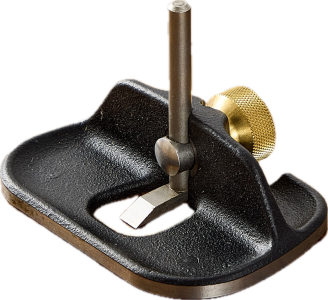I almost convinced myself that I could reproduce that in my shop, but nearly every step in the process would require some sort of engineering on my part, and as I mentioned in my first post in this thread, there were some stumbling blocks that I was not sure I could step over. In end, it seemed too challenging (though I liked the idea that it would not involve any heavy lifting—my body was starting to complain about 4’ x 8’ sheets of plywood).
If there were published plans, I might have given it a “go”, but I did not find any at that time.
This time I found an “Instructables” 7-step building plan, and a not-very-attractive view camera plan plus others that were not online some 25 years ago.
But a classic mahogany field camera was my aspiration.
The photos of this old Thornton Pickard view camera, still has me convincing myself that I could make the mahogany parts, but not the brass parts. (15 detailed photos):
Exc++ 95%. Very clean & attractive looking all over. Very clean wood, brass fittings, bellows, lens barrels & optics. All working and moving well. Base board has been added for tripod use
mwclassic.com
I would note that view camera lenses are currently sold and currently produced. The best lenses are expensive, but all of the lenses include a F-stop diaphragm and a shutter, so the camera production really only needs the body, back and lens holder.
A camera for portraits-only, would not need to have a focus mechanism as you could establish as standard shooting distance. A very limited camera, but easy to make. Just a box, really (with a lens board and a back to hold the film holders).




